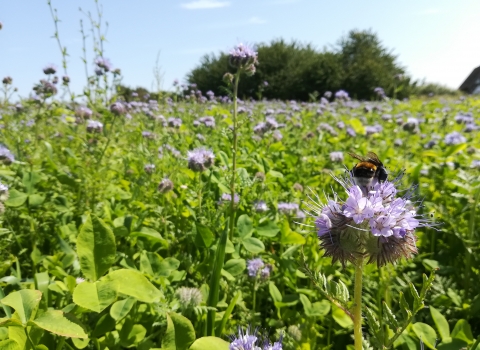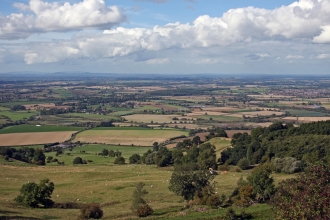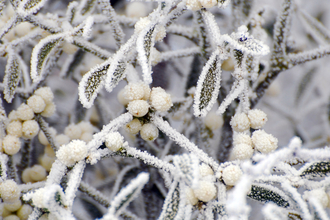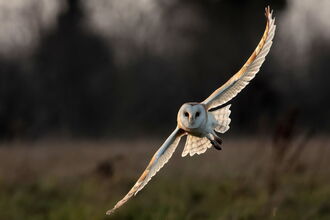Farming plays an important role in Worcestershire's countryside and has a significant impact on wildlife in the county. We own and manage farms at Naunton Beauchamp and Lower Smite as well as managing many other grazed and cultivated fields around the county.
Healthy soils
Healthy soils lie at the heart of healthy wildlife and food production systems. However, after World War Two, the government instructed farmers to plough up grasslands and maximise yields through the use of intensive cultivation, artificial inputs and plant and animal breeding. Now, over 70 years later, the UK agriculture industry is still seeking to maximise production. We no longer have inherent fertility in the land and there is a risk that intensification using fertilisers and pesticides will continue to be promoted, to the detriment of wildlife and soil condition.
With around 75% of terrestrial wildlife living in the soil, a thriving soil food web is vital to the recovery of the majority of farmland wildlife, most of which continues to suffer ongoing declines. A healthy soil is also fundamental to establishing a resilient cropping system able to cope with the adverse weather patterns created by climate change.
This context, together with the fact that our nature reserves are surrounded by the farmed landscape, makes it vital that we work together with other Worcestershire land-managers and deliver conservation advice on a wide range of subjects. Our Water and Wetlands Officer seeks to limit pollution from fertiliser and silt. In addition we can offer help with meadow restoration and creation, conservation grazing, soil and water management, green manures, organic farming , woodland management and wetland restoration and creation.
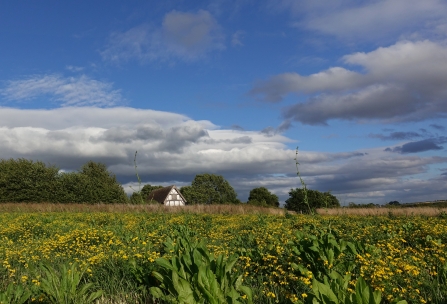
Lower Smite Farm by Steve Bloomfield
By the time the Trust purchased Lower Smite Farm the soil had already declined in terms of organic matter and soil wildlife. It had become almost totally reliant on artificial inputs to grow arable crops and this was associated with costly heavy cultivations to create seedbeds. Rebuilding soil organic matter and increasing soil invertebrates like earthworms are therefore important considerations in our management. We have planted a wide range of ‘green manure’ mixes, including red and white clovers, cocksfoot, yellow trefoil and phacaelia to ‘feed’ the soil and encourage microbial activity. These mixes also provide good forage for sheep and cattle. We seek to maximise soil health through planting longer term grassland mixes, minimising cultivations, sowing diverse leys which deliver benefits in terms of water holding capacity and carbon storage, as well as feeding and providing habitat for wildlife such as insects, birds and mammals. We do not allow insecticides or slug pellets and instead have removed crops such as oilseed rape that require artificial, environmentally-damaging inputs.
Farming at Lower Smite Farm
Lower Smite Farm © Caroline Corsie
The Trust's Lower Smite Farm is, at 65ha, an average sized farm for Worcestershire and like many farms most of the income it generates comes from direct agricultural payments and various Countryside Stewardship grants.
Half the farm is managed organically and visitors will see a wide range of management strategies. We have focussed on soil health, connectivity, year-round food supplies for wildlife and creating a place for wildlife to live with minimal stress. As of 2020 we no longer grow any conventional crops that demand high levels of artificial inputs in terms of fertiliser and pesticides . Now, we aim to continue maximising opportunities for wildlife whilst exploring the potential for growing for more local crops and markets e.g. low-input heritage wheat. With no livestock of our own, we collaborate with neighbouring farms, providing their livestock with grazing in return for hay-making and our importing farmyard manure to continue improving our soil health and to feed the dung beetles. Collaborating means that we have not had to invest in high-cost machinery or livestock.
The entire farm has been in a Higher-Level Stewardship scheme (HLS), which expired in 2020. The HLS , based on an income forgone calculation, ‘paid’ land-managers to take areas out of production and, where possible, integrate more environmentally-friendly land use without pesticides and fertilisers . It allowed focus on creating and maintaining a wide range of habitats ranging from wetlands to cultivated fallows for rare arable plants. The farming volunteers, who meet every Tuesday, carry out a wide range of activities including the planting of over 5ha of native woodland, 4 km of hedges (and laying over 500 metres of hedge) as well as planting over 1000 plugs of hedge base flora such as bluebell and primrose and scattering wild bird seed mix every week from December to the end of March to supplement ’the hungry gap’. Over eight hectares of grassland at Smite is now species-rich as a result of locally sourced species-diverse hay being spread.
As of March 2021, we are entering a Countryside Stewardship agreement called The Mid-Tier. We have put a lot of thought, planning and land management options into the new scheme so the farm should look ‘flower-bombed’ (as one visitor described it) and we will have to hope the weather is on our side in 2021. While we establish the Mid-Tier, we are also preparing for the new Environmental Land management scheme (ELMs) to emerge from a wide range of pilot trials with a system that aims to reward land managers appropriately for delivering public goods such as clean air, natural flood management and thriving wildlife.
Making space for beneficial insects
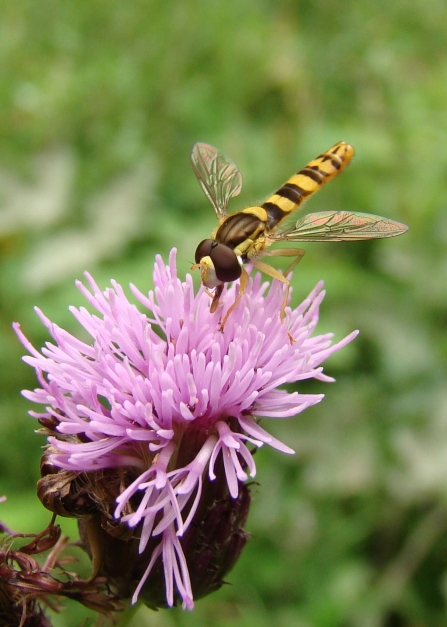
Hoverfly on Knapweed CREDIT Steve Bloomfield
On well-managed farmland, healthy and thriving populations of native insects should be complementary to crop rotations in managing pests and improving soil quality. Many species provide valuable services and so seeking to maximise their numbers makes good business sense as well as being the 'right' thing to do. For example, species-diverse hedgerows can support up to 1500 insect species, many of which offer vital services such as pollination of flowering crops and pest predation.
Flies, for example, are extremely valuable even though they are frequently overlooked as beneficial insects. Adult hoverflies (there are over 260 species of hoverfly in Britain) eat pollen and drink nectar and their foraging behaviour leads to pollination of a wide range of flowering plants. Just under half of them have larvae that are predators on other insects such as aphids that can carry viruses into crops and reduce yield and quality. Alternative control methods obviously include the use of insecticides but these have knock on effects on wildlife and potentially on public goods like drinking water. We promote an Integrated Pest Management (IPM) approach whereby crop husbandry is planned to engage with nature in order to save money as well as reduce environmental impact. This has included our supporting Friends of the Earth in the promotion of Integrated Pest Management as well as ongoing working with other Wildlife Trusts to develop strategies that will support farmers in their decision making.
Our pollinators project is helping farmers and land mangers to maximise opportunties for benefical insects across their land too.

